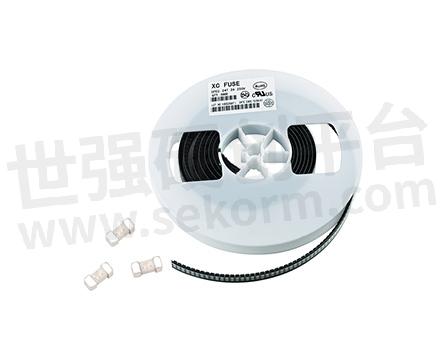The Correct Steps for Selecting a Self Recovering Fuse Model


1. Determine the following parameters of the self recovering fuse circuit:
● Maximum working environment temperature
● Standard operating current
Maximum operating voltage (maximum)
Maximum fault current (Imax)
2. Choose a resettable fuse that can adapt to the highest ambient temperature and standard operating current of the circuit.
Use the table below and select the temperature that best matches the highest ambient temperature of the circuit.
Browse this column to find values equal to or greater than the standard operating current of the circuit.
3. Compare the maximum electrical rating of the selected component with the maximum operating voltage and fault current of the circuit.
Use electrical characteristics to verify whether the components selected in Step 2 will use the circuit's maximum operating voltage and fault current.
Check the maximum operating voltage and maximum fault current of the equipment.
Ensure that Umax and Imax are greater than or equal to the circuit's maximum operating voltage and maximum fault current.
4. Determine the operation time
The action time is required to switch the component to a high resistance state when a fault current occurs throughout the entire device.
In order to provide the expected protection function, it is important to clarify the working time of the resettable fuse.
If the selected component moves too quickly, abnormal or harmful operations may occur.
If the component moves too slowly, the protected component may be damaged before switching to a high resistance state.
Use the typical working time curve at 25℃ to determine whether the working time of a resettable fuse is too fast or too slow for the circuit.
If so, please return to step 2 and reselect the backup component.
- +1 Like
- Add to Favorites
Recommend
- The Operating Principle of Self Recovering Fuse PPTC in USB Protection
- Description of Metal Materials for Self Recovering Fuses
- Principle and Characteristics of Self Recovering Fuses
- Experience in Selecting Self Recovering Fuses
- Self Healing Fuses, a New Type of Overcurrent Protection Component
- The Difference between Self Recovery Fuse and Blown Fuse
- Guidelines for Selecting Self Restoring Fuses and Disposable Fuses
- Self Recovery Performance and Working Process of Self Recovery Fuses
This document is provided by Sekorm Platform for VIP exclusive service. The copyright is owned by Sekorm. Without authorization, any medias, websites or individual are not allowed to reprint. When authorizing the reprint, the link of www.sekorm.com must be indicated.





























































































































































































































































































































































































































































































































































































































































































































































































































































































